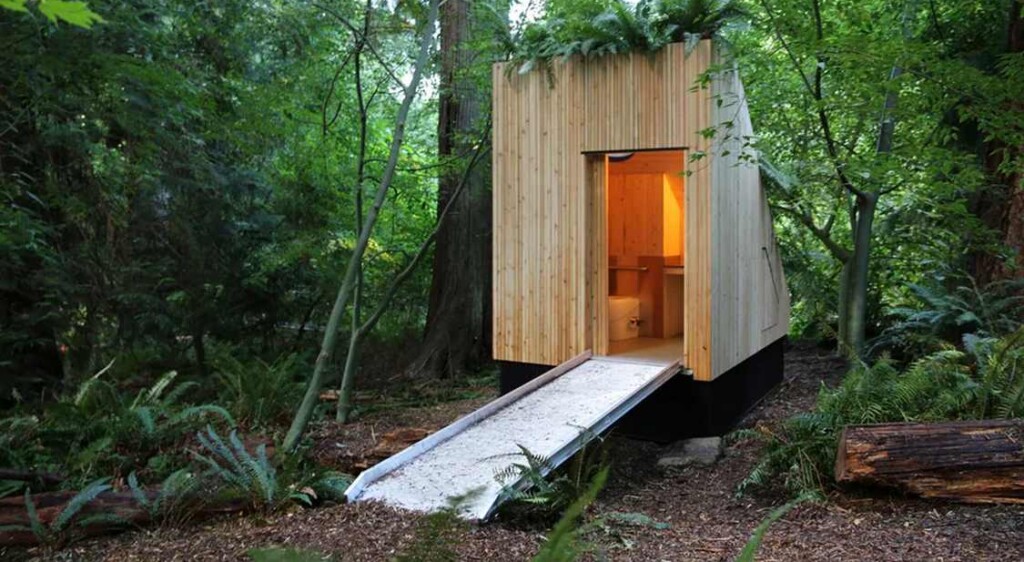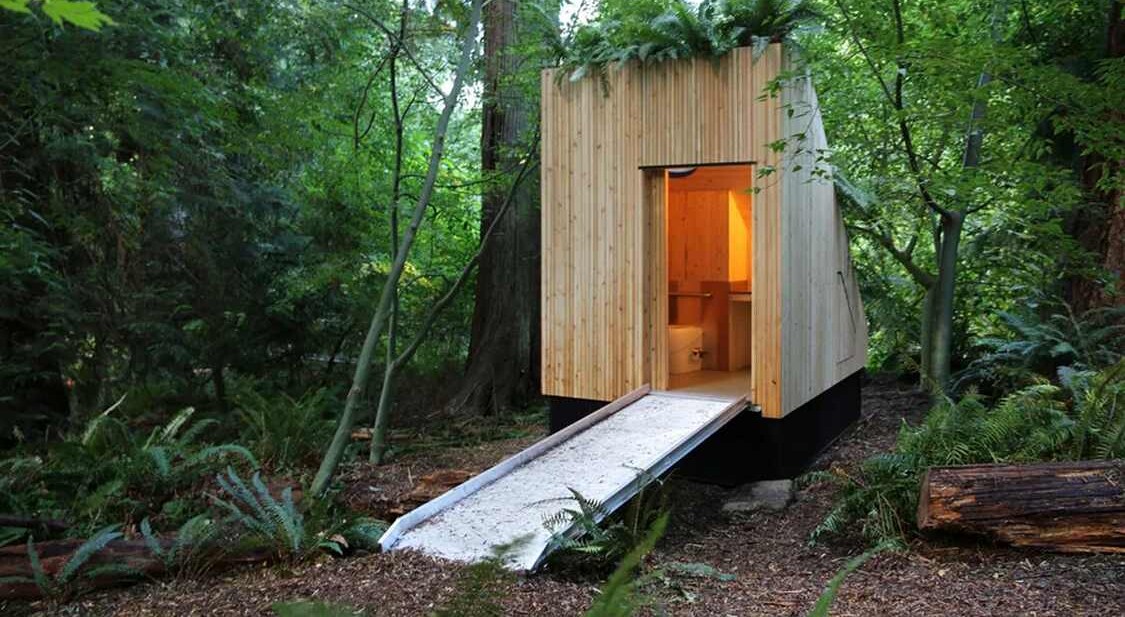
Scientists have used the root system of mushrooms to create a composting toilet that is odor absorbing, while creating over 2,000 liters of fertilizer and soil a year.
Separating solids from from liquids and processing each in different ways using fungal mycelia, the toilet can currently be found in the University of BC botanic gardens.
Called the MycoToilet, it was developed by Steven Hallam, a professor of microbiology at UBC, and Joseph Dahmen, the project’s lead and an associate professor at the university’s School of Architecture.
Together, they hope to rethink a product and system that many people take for granted, starting with their students, most of whom were unable to answer the question: what happens to human waste after the toilet is flushed, said Dahmen.
“We wanted to turn a daily routine everyone knows into a pleasant experience that reminds us of our connection to ecological cycles.”
The waterless toilet separates liquid from solid human waste, with the solids ending up an a mycelia-lined compartment where laboratory tests say 90% of the odor-causing compounds are eliminated. The feces are then converted, slowly but surely, into soil, 600 liters of which can be generated in a year of use, with the liquid waste creating some 2,000 liters of liquid fertilizer.
Not all wastewater treatment plants in the US or the world can produce fertilizer from the waste they collect. In many instances, it’s merely sanitized within the regulatory limits, and dumped into the sea or rivers in the form of one of the least-pleasant words in the English language: ‘effluent.’
NO MORE WASTING WASTE: A Melbourne Sewage Farm Has Become a Haven for 300 Species of Birds
“Waste is a function of our values, and if we can rethink what we value in this context, there’s lots of useful material in these effluents, and we can recover that, then we’re adding value back and creating a more circular model for the economy and our lives,” Hallam told CBC.
MUSHROOM STORIES: Packet of Fungi Inside New Diapers Breaks Them Down in Landfill Turning it to Mycelium
Hallam and Dahmen will be evaluating the performance of the various species of fungus they’ve used in the compartments to see which is able to compost or odor-eat the best during the 6-month trial run in the campus botanical garden where it looks right at home amid the woods with its ceder panels.
Mushrooms have been theorized as a way to break down virtually anything in our society, from nuclear waste to our own bodies, as the organisms work symbiotically with the whole soil microenvironment to disassemble even the most complex of molecules.
SHARE This Great Green Invention With Your Friends In BC…


Leave a Reply